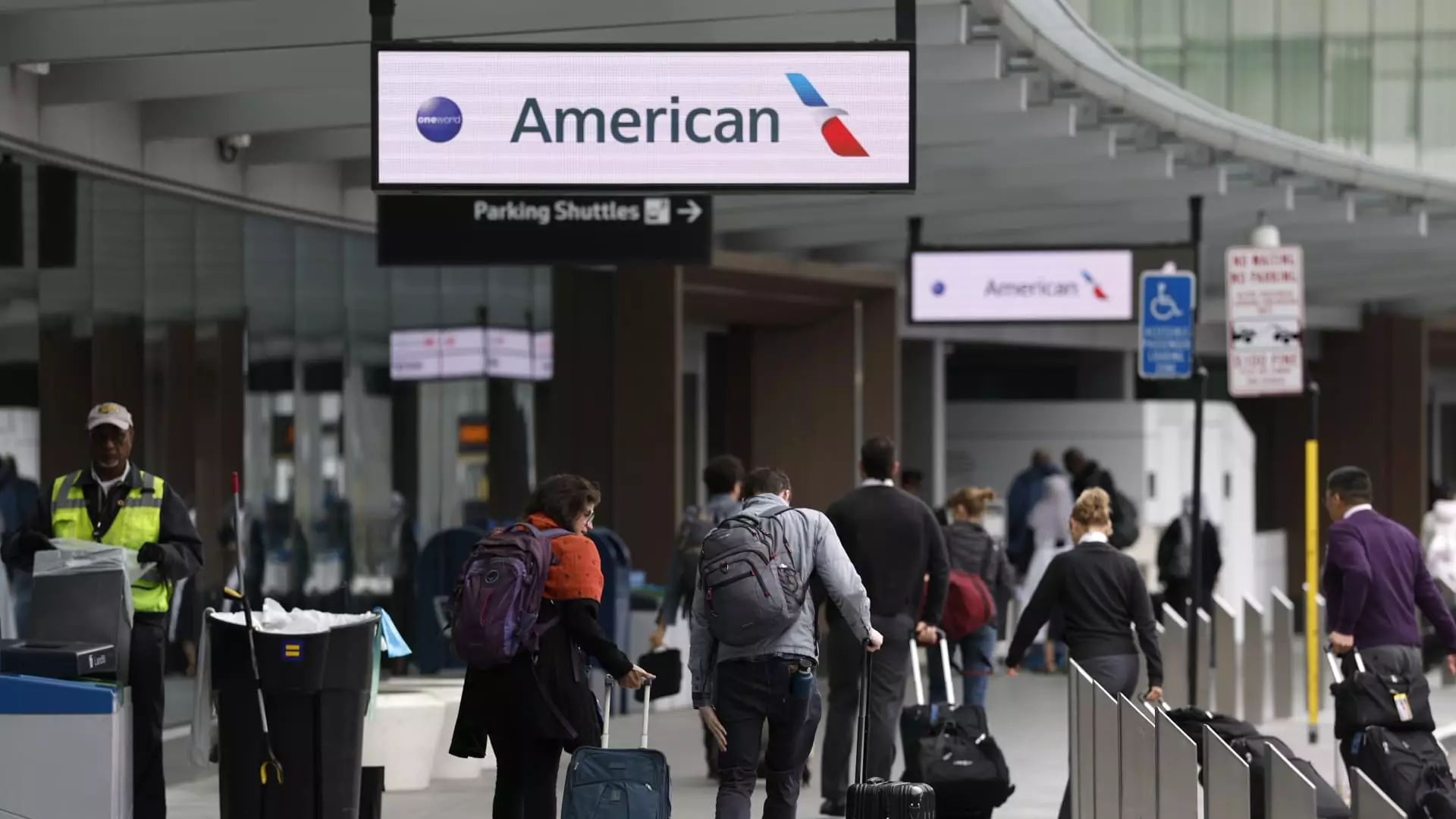There’s a palpable tension in the air, and it’s not just the metallic scent of jet fuel wafting through airport terminals. As we stride into what was anticipated to be a booming travel season for airlines, we instead find ourselves staring down the barrel of economic uncertainty. Recent statements from major airline CEOs reveal a startling trend: passenger demand for domestic travel is stagnating. After a year of optimism when lofty forecasts were set, the reality is proving to be far less rosy. It makes one wonder: just how resilient is our economy if even the skies are filled with doubt?
The crux of the issue lies in a confluence of factors that include President Donald Trump’s erratic tariff policies, fluctuating financial markets, and an overarching sense of unpredictability that grips consumers. As American Airlines CEO Robert Isom candidly pointed out, uncertainty casts a long shadow over holiday planning and expenditures. With vacationing families scrutinizing their budgets, the mood is decidedly “fiscal caution.” Who wants to splurge on a vacation when the economic underpinnings seem so shaky?
The Capacity Crisis: Too Many Seats, Too Few Passengers
As a result of faltering demand, airlines find themselves grappling with an oversupply of seating. This predicament is not novel; the airline industry has been down this road before. Major players like Delta and Southwest have reined in their ambitious growth plans, driven by a nagging fear that passenger numbers won’t align with their forecasts. Their retreat signals a significant shift in the market, one that leaves them with fewer flight options than originally intended and a desperate need to fill the planes they already have.
For travelers, this oversupply paradoxically leads to a decrease in airfare—a silver lining for consumers even as it stresses the airlines’ revenue streams. Data from the Bureau of Labor Statistics shows a noteworthy drop in ticket prices, with a staggering 5.3% dip in March compared to the previous year. Nonetheless, it’s a troubling victory for the airlines, as they are essentially reducing their profit per seat in an effort to mitigate the effects of less-than-expected demand.
The Corporate Travel Dilemma: A Critical Revenue Stream Erodes
One of the more complicated layers of this unfolding saga is the decline in corporate travel. Business class passengers are typically less price-sensitive, but with government cutbacks and layoffs impacting company budgets, the once-reliable flow of corporate travelers is becoming increasingly unreliable. Analysts like Conor Cunningham pinpoint this demographic’s volatility as pivotal; when uncertainty arises, business travel usually evaporates. It’s concerning that airlines hinge their hopes on a customer base that now seems more fickle than ever, whose loyalty could easily be swayed by a fluctuating stock market or geopolitical tensions.
The decline of corporate travel poses existential risks to major carriers. Even as Delta’s CEO Ed Bastian observed a year-on-year growth that hinted at resilience, that same growth quickly plateaued, exposing the fragility of the market. The industry seems to float amidst an alarming paradox: passenger numbers are high for leisure travel, yet the inconsistency of corporate travelers is a more significant revenue risk.
Filling the Empty Seats: Price Cuts and Operational Strategies
Given the predicament of excess capacity, airlines are resorting to fare slashes in a desperate bid to fill seats. Alaska Airlines has openly acknowledged that lower-than-anticipated demand is impacting projections for their upcoming quarter. CFO Shane Tackett’s comments underscore a bleak reality: while demand is present, it is not reaching the optimistic peak initially expected.
It’s remarkable how quickly the narrative can shift within the airline industry. What once was deemed a solid outlook has proven to be merely a facade, cracked by shifting consumer sentiment and economic pressures. The industry’s underlying challenges necessitate adaptive strategies that not only focus on filling seats but also on maintaining operational integrity in a world where consumer confidence is becoming ever more fragile.
Airline executives remain optimistic that clarity will ultimately restore confidence to the economy. Yet, with so many uncertainties bubbling beneath the surface, one cannot help but wonder if we’re merely delaying the inevitable. The rising tide of consumer hesitation may soon become not just an inconvenience but a significant obstacle to recovery, leaving airlines grappling with the consequences for years to come.

